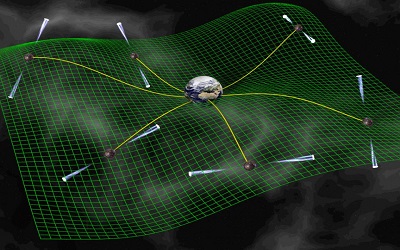在PTE中,无论是Summarise Spoken Text 还是 Re-tell Lecture的考题大都是从真实的讲座或者演讲中截取的中间经常经常夹杂很多不同的环境音.很多同学都反映有时未必是听不懂,而是听不到. 鉴于此,墨尔本悉尼文波雅思PTE专门为大家总结了真实讲座的PTE练习音频,相比新闻音频来说,整体更加接近PTE考试的真题,内容方面,我们也会为大家提供考试中存在的近似题,最近我们会持续更新,敬请期待!
Let me just show you a little video this idea just to emphasize that light comes from a source which is a laser goes through a mirror get split goes out two arms comes back almost cancels but if any light goes to the receivers then we see that light. This is just showing the same idea with waves themselves ‘cause the light comes in different waves and how they come back and they canceled or nearly cancelled and then what we see in the detectors, so that’s the basic idea, so how small is this change we want to measure, that’s the technique, but how small it is, we ultimately want to go to something like 10 to the minus 19 meters, we talk about 10 to the minus 18, but 10 to the minus 19 is kind of our goal. And so how small is that, let me remind you how small it is. A meter, we all know how big a meter it is, basically that long, the human hair some of us have some left is about 100 microns in there, so that’s 10,000 times smaller than a meter. Hair, we can all handle that. Wavelength of light like a light in the laser beam, it’s a hundred times small than that, that’s basically a mite one micron. The atomic diameter, now getting two things a little harder for us to visualise, but the atomic diameter is 10,000 times smaller than that and that’s 10 to the minus 10 meters. The proton getting to something that’s basic and using particle accelerators for example, yeah it’s the size of 10 to the minus 15 meters. That’s 100,000 times smaller than the atom. And we want to go a factor of 10,000 times smaller than that, so that’s the magic and maybe the reason people thought this would never work, but it does.





